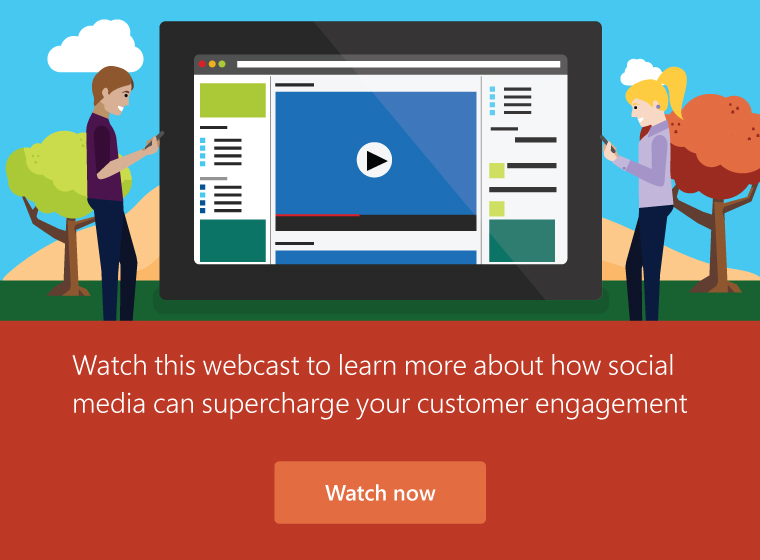
How to engage your audience on social media
Engagement is a north star for most marketing campaigns. We spend countless hours, dollars, and other resources researching and creating our content, but all that effort is for naught if we’re not engaging anyone. We want our audience to react to our content, to download our e-books, read our blogs, or follow our social streams. So, we adopt new social strategies to promote our latest work and open the door for audience conversations. But, posting content on Twitter or Facebook and assuming your audience will find it on their own is optimistic at best, and crippling at its worst. Those environments require focused, constant attention, and today, we’re going to focus on how refined social experiences can help boost your own social media engagement.
Build your ideal audience
The first step in a successful social campaign is understanding who your campaign is created for. We discussed a similar idea earlier in our Four critical elements of content marketing feature—you have to know your audience. For content, that means understanding their wants and needs, and how your content fits in to the equation. For social, building your ideal audience requires you to paint a picture of the user on the other side of each post. Who do they follow, how often do they check their feed, what are they looking for on social media in the first place? Ask why this person might follow a specific channel, and adapt your content to meet that image.
Personalize your social experience
There are dozens of posts out there that discuss when and how to post on each major social media site: 3-5 tweets per day, post on Facebook in the mid-afternoon, create a consistent Instagram feed. Find those articles, read them, and adjust them to your strategy. But throughout your social experiences, it’s critical to remember that each space speaks to a different persona. Twitter is great for casual interactions and quick exchanges; Facebook is ideal for a consumer market; and LinkedIn thrives in the business-scape. When you understand each social media platform’s experience, it’s clear that content built for a space like Facebook or Instagram won’t perform as well somewhere like LinkedIn. Take the time to understand each experience and adjust your voice, expectations, and efforts to make the most of it.
Not all platforms are created equal
The number of active social platforms are growing every year. What started as just MySpace and Facebook has ballooned to dozens of social and professional environments with varying degrees of photos, videos, memes, captions, and comments. In this ever-growing space, take the time to decipher which social platforms best represent your organization and audience. Pinterest is great for textiles, home improvement, and hobbies—not so much for corporate finance. LinkedIn thrives in thought leadership, but isn’t exactly optimized for media distribution. Determine how each of these platforms can promote your brand. Focus on the ones that support your objectives and industry, and leave those that don’t off the list.
Consistency is key
Despite where you choose to build your next great social empire, remember that consistency is essential to sustained social engagement. Your posting schedule creates a relationship with your audience, and irregular content strains that engagement. Likewise, unique language across diverse platforms ought to support a consistent vision—that of your overall campaign. Differing social media platforms should inform the way you present your message, without changing the message entirely.
Social engagement is the doorway to community. Across platforms and posts, these opportunities exist to help welcome your audience into your organization, to invite them to be part of your vision. If you’d like to join Microsoft in Business as we continue our content marketing journey, feel free to follow us on Facebook, LinkedIn, and Twitter, and be sure to watch this webinar, Up Your Marketing Game: Social Media Secrets, to see how social media can supercharge your marketing.





